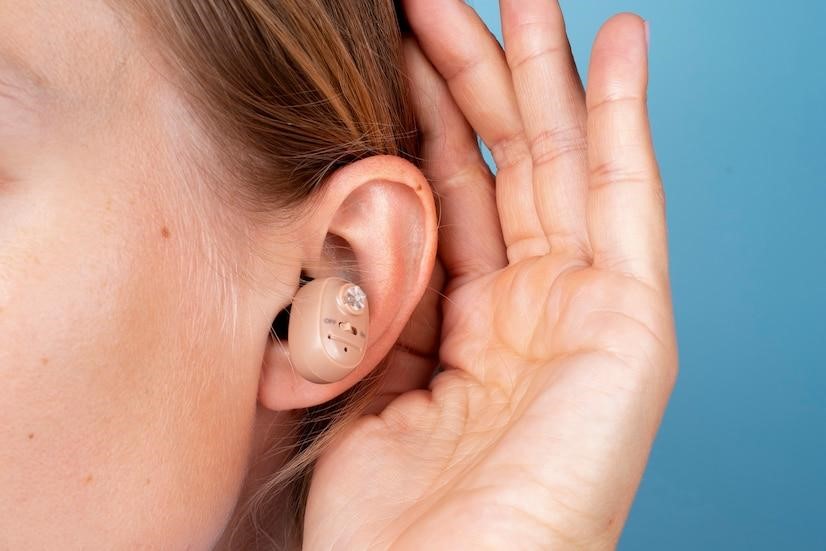Better Hearing: Exploring The World Of Hearing Aids

Welcome to the fascinating world of hearing aidshttps://www.tnseeparanormal.com where cutting-edge technology has the power to transform lives. This article will explore the incredible advancements in hearing aid technologyhttps://www.tnseeparanormal.com helping you understand how these devices can improve your hearing and overall quality of life.
Understanding Hearing Loss
Hearing loss is a common condition that affects millions of people worldwide. Various factorshttps://www.tnseeparanormal.com including aginghttps://www.tnseeparanormal.com exposure to loud noisehttps://www.tnseeparanormal.com and certain medical conditionshttps://www.tnseeparanormal.com can cause it. Understanding the different types and degrees of hearing loss is crucial in finding the right hearing aid solution for your needs.
There are three main types of hearing loss: conductivehttps://www.tnseeparanormal.com sensorineuralhttps://www.tnseeparanormal.com and mixed. Conductive hearing loss occurs when a problem with the outer or middle ear prevents sound from reaching the inner ear. Sensorineural hearing loss is caused by inner ear or auditory nerve damage. Mixed hearing loss is a combination of both conductive and sensorineural hearing loss.
The Importance Of Hearing Aids
Hearing aids are vital in improving the quality of life for individuals with hearing loss. They work by amplifying sounds and making them more audible. By wearing hearing aidshttps://www.tnseeparanormal.com you can regain the ability to communicate effectively and participate fully in various activities.
Beyond improving hearinghttps://www.tnseeparanormal.com wearing hearing aids has been linked to various additional benefits. Research has shown that hearing aids can enhance cognitive abilitieshttps://www.tnseeparanormal.com reduce the risk of depression and anxietyhttps://www.tnseeparanormal.com and even improve overall brain health. Embracing hearing aids can profoundly impact your well-being and social interactions.
Different Types Of Hearing Aids
The world of hearing aids offers various options to suit different needs and preferences. The most common types include behind-the-ear (BTE)https://www.tnseeparanormal.com in-the-ear (ITE)https://www.tnseeparanormal.com and in-the-canal (ITC) models.
BTE hearing aids are worn behind the ear and are suitable for individuals with mild to profound hearing loss. They are known for their power and durabilityhttps://www.tnseeparanormal.com making them popular among users. ITE hearing aidshttps://www.tnseeparanormal.com as the name suggestshttps://www.tnseeparanormal.com are custom-made to fit inside the ear. They are less visible and more discreethttps://www.tnseeparanormal.com making them a preferred option for those concerned about aesthetics. ITC hearing aids are even smaller and fit partially in the ear canalhttps://www.tnseeparanormal.com balancing discretion and functionality.
How To Choose The Right Hearing Aid For You
Choosing the right hearing aid is a highly individualized process that depends on several factorshttps://www.tnseeparanormal.com including the degree of hearing losshttps://www.tnseeparanormal.com lifestylehttps://www.tnseeparanormal.com and personal preferences. Consulting with a hearing care professional is crucial in determining your best option.
During your consultationhttps://www.tnseeparanormal.com your hearing care professional will conduct various tests to assess your hearing and recommend suitable hearing aids. They will consider factors such as stylehttps://www.tnseeparanormal.com technology featureshttps://www.tnseeparanormal.com and budget. Communicating your needs and expectations is essential to ensure the selected hearing aid meets your requirements.
Tips For Adjusting To Wearing Hearing Aids
Adjusting to wearing hearing aids may take time and patience. Here are some tips to help you through the adjustment process:
- Start in a quiet environment: Use your hearing aids in a peaceful setting to get accustomed to hearing everyday sounds.
- Gradually increase wearing time: Slowly increase the duration of wearing your hearing aids each day to allow your brain to adjust to the amplified sounds.
- Communicate with loved ones: Inform your family and friends about your new hearing aids so they can provide support and understanding during the adjustment period.
- Follow up with your hearing care professional: Regular follow-up appointments with your hearing care professional are essential to ensure your hearing aids are correctly adjusted and meet your needs.
Caring For Your Hearing Aids
Proper care and maintenance of your hearing aids ensure optimal performance and longevity. Here are some essential care tips:
- Keep them clean: Regularly clean your hearing aids using a softhttps://www.tnseeparanormal.com dry cloth or a specialized cleaning tool provided by your hearing care professional.
- Avoid moisture: Remove your hearing aids before showeringhttps://www.tnseeparanormal.com swimminghttps://www.tnseeparanormal.com or engaging in activities that may expose them to excessive moisture.
- Store them properly: When not in usehttps://www.tnseeparanormal.com store your hearing aids in a dry and protective case to prevent damage.
- Schedule regular check-ups: Regular visits to your hearing care professional for cleaning and maintenance will help prolong the lifespan of your hearing aids.
The Latest Advancements In Hearing Aid Technology
Hearing aid technology has evolved rapidlyhttps://www.tnseeparanormal.com offering users enhanced listening experiences and improved connectivity. One significant advancement is the integration of Bluetooth technologyhttps://www.tnseeparanormal.com which allows hearing aid users to connect wirelessly to their smartphoneshttps://www.tnseeparanormal.com televisionshttps://www.tnseeparanormal.com and other devices. This wireless connectivity enables seamless audio streaming and hands-free phone calls.
Another notable innovation is rechargeable hearing aid devices. Gone are the days of constantly changing batteries. Rechargeable hearing aids offer convenience and peace of mindhttps://www.tnseeparanormal.com eliminating the need for disposable batteries. Simply place your hearing aids in a charging case overnighthttps://www.tnseeparanormal.com and they will be ready to use the next day.
Hearing Aid Accessories And Additional Features
Various accessories and features can enhance your hearing aid experience:
- Remote Controls: Allow easy volume adjustment and switching between listening programs.
- Smartphone Apps: Enable control and customization for convenience and personalization.
- Bluetooth Accessories: Pair with devices like TV streamers for direct audio streaming.
- Telecoil Systems: Improve sound clarity by connecting to loop systems in public venues like theaters and places of worship.
Conclusion: Embracing A World Of Better Hearing
The world of hearing aids offers many options and features to improve your hearing and quality of life. From sleek and discreet designs to powerful technology advancementshttps://www.tnseeparanormal.com today’s hearing aids are more effective and user-friendly than ever before.
By understanding the different types of hearing aidshttps://www.tnseeparanormal.com choosing the right one for your needshttps://www.tnseeparanormal.com and embracing the latest technological advancementshttps://www.tnseeparanormal.com you can unlock a world of better hearing. Don’t let hearing loss limit your potential—take the first step towards better hearing and a more prosperoushttps://www.tnseeparanormal.com fulfilling life.
